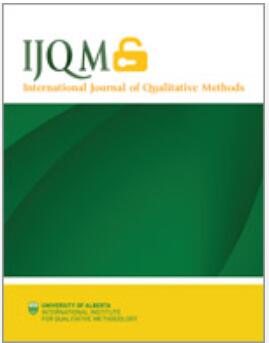How to Encourage Inclusion in a Qualitative Research Project Using a Design-Based Research Methodology
IF 3.9
2区 社会学
Q1 SOCIAL SCIENCES, INTERDISCIPLINARY
引用次数: 0
Abstract
Many issues and challenges face research design and research teams that want to become more inclusive, especially in large-scale research projects involving many stakeholders. This article explores an approach called Design-Based Research (DBR). DBR has been widely used in education for several years; it emphasizes collaboration with the community and takes the context of participants into consideration. DBR is transposable to other disciplines and is intended to be inclusive of the diverse stakeholders involved in a research project. For instance, in an ongoing research project about unconscious bias and inclusive behaviors, it takes into account all stakeholders’ needs and involves them in all stages of the research, which is taking place in a real-world context rather than a laboratory. The aim of this article is to better understand how the DBR methodology enables the inclusion of historically marginalized groups and how it is applied in the field. This exploratory article will present an example of an ongoing research project using the DBR methodology to show how this approach can be more inclusive than experimental approaches. This exploration reveals the positive impact of DBR in implementing solutions that can help reduce inequalities and power relationships. It also reveals the complexity of conducting qualitative research in a social laboratory. In particular, it takes into account the specificity of each historically marginalized group, from an intersectional perspective, the difficulty of operating within a process where not everything is determined in advance, and the need for a researcher specializing in DBR. It is important to allow sufficient time and financial resources at each stage to recognize the involvement of community organizations. The tools and knowledge generated by this type of research project will be useful for other organizations and future research.如何使用基于设计的研究方法鼓励定性研究项目中的包容性
希望更具包容性的研究设计和研究团队面临着许多问题和挑战,尤其是在涉及众多利益相关者的大型研究项目中。本文探讨了一种名为 "基于设计的研究"(DBR)的方法。DBR 已在教育领域广泛应用多年;它强调与社区合作,并将参与者的背景考虑在内。DBR 可移植到其他学科,旨在包容参与研究项目的不同利益相关者。例如,在一个正在进行的关于无意识偏见和包容性行为的研究项目中,它考虑到了所有利益相关者的需求,并让他们参与到研究的各个阶段,研究是在现实世界而不是实验室中进行的。本文旨在更好地了解 DBR 方法如何使历史上被边缘化的群体融入其中,以及如何将其应用于实际工作中。这篇探索性文章将举例说明一个正在进行的研究项目如何使用 DBR 方法,以说明这种方法如何比实验方法更具包容性。这一探索揭示了 DBR 在实施有助于减少不平等和权力关系的解决方案方面的积极影响。它还揭示了在社会实验室开展定性研究的复杂性。特别是,它从交叉的角度考虑到了每个历史上被边缘化的群体的特殊性,考虑到了在一个并非所有事情都事先确定的过程中进行操作的难度,以及对专门从事 DBR 的研究人员的需求。重要的是,在每个阶段都要留出足够的时间和财力,承认社区组织的参与。这类研究项目所产生的工具和知识将对其他组织和未来的研究有用。
本文章由计算机程序翻译,如有差异,请以英文原文为准。
求助全文
约1分钟内获得全文
求助全文
来源期刊

International Journal of Qualitative Methods
SOCIAL SCIENCES, INTERDISCIPLINARY-
CiteScore
6.90
自引率
11.10%
发文量
139
审稿时长
12 weeks
期刊介绍:
Journal Highlights
Impact Factor: 5.4 Ranked 5/110 in Social Sciences, Interdisciplinary – SSCI
Indexed In: Clarivate Analytics: Social Science Citation Index, the Directory of Open Access Journals (DOAJ), and Scopus
Launched In: 2002
Publication is subject to payment of an article processing charge (APC)
Submit here
International Journal of Qualitative Methods (IJQM) is a peer-reviewed open access journal which focuses on methodological advances, innovations, and insights in qualitative or mixed methods studies. Please see the Aims and Scope tab for further information.
 求助内容:
求助内容: 应助结果提醒方式:
应助结果提醒方式:


